Abstract:
The Vapor Chamber is widely used in the thermal management of electronic equipment, electronic components, new energy vehicles, industrial production, household appliances and military and other fields. Firstly, the selection of shell material, suction core type and working medium of the soaking plate is summarized. Then, it describes the application research of spillage plate in different fields, including the research results and progress of experiment, numerical simulation and theoretical research of spillage plate in different application fields. Finally, the steady-state and transient thermal properties of the aluminum soaking plate are measured, and the average steady-state and transient thermal resistance are 0.15 K/W and 0.14 K/W, respectively.
With the integration of various technical equipment, the heat flux of equipment is increasing, and the high heat flux brings great harm to the integrated equipment. Therefore, the effective heat management has become the focus of scholars in recent years. As a kind of efficient heat dissipation equipment, vapor chamber is widely used.
The vapor chamber is composed of a shell, a liquid suction core and a steam chamber, which contains phase change heat transfer working medium. The schematic diagram of the working structure of the soaking plate is shown in Figure 1.
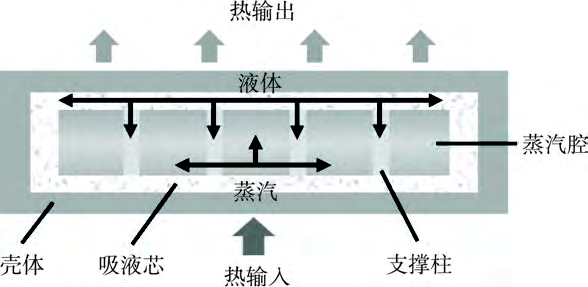
Schematic diagram of working structure of VC
The working cycle principle of the vapor chamber is as follows :1) The working medium absorbs heat from the heat source at the evaporation end and evaporates; 2) Steam flows to the condensing end under the action of pressure difference; 3) Steam is dissipated and condensed by external forced convection at the condensing end; 4) The liquid at the condensing end returns to the evaporating end for a working cycle under capillarity pressure.
The selection of shell material, suction core type and working medium are the three most important parts in the process of manufacturing vapor chamber.
The selection of shell material mainly considers the compatibility between shell material and working medium, thermal conductivity and wettability of shell. If the shell material in the vapor chamber is incompatible with the working medium, chemical reactions or physical changes will occur, resulting in non-condensing gas, deterioration of the thermal properties of the working medium, as well as corrosion and dissolution of the shell material, which will reduce the phase change heat transfer of the working medium and the heat transfer effect of the shell material, and even lead to the failure of the soaking plate. Some commonly used working media and their compatible shell materials are shown in Table 1.
Table 1 Some commonly used working media and their compatible shell materials
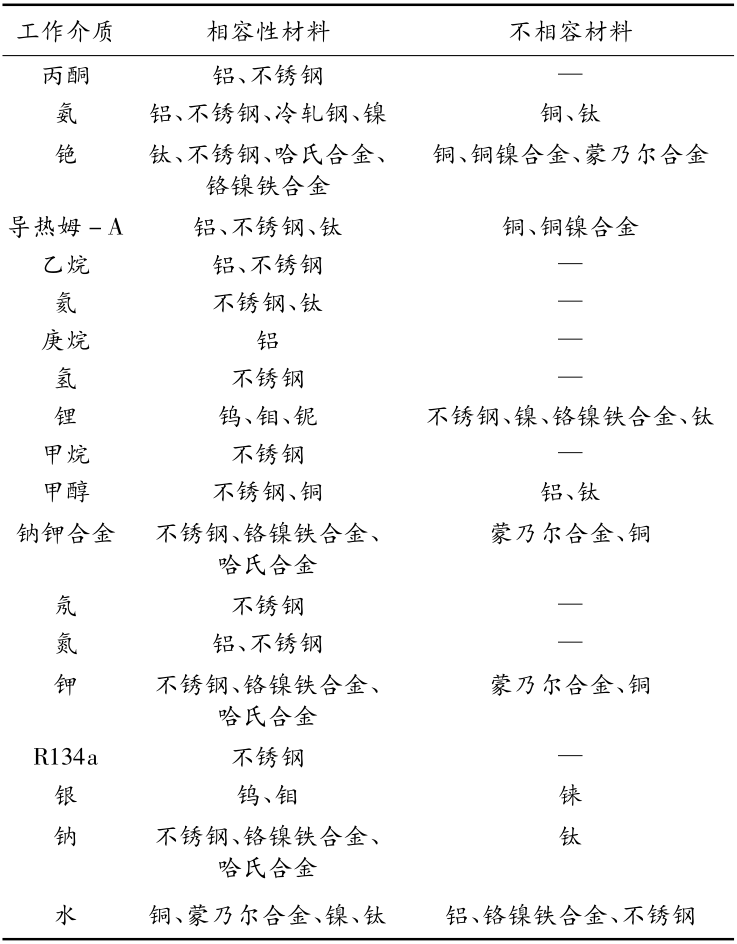
The working medium of the vapor chamber is the main carrier of phase change heat transfer. While satisfying the compatibility of the working medium with the tube and shell materials and the liquid absorbing core, the thermal stability, saturated vapor pressure at working temperature, thermal conductivity, melting point, boiling point, wettability, economy, toxicity and environmental pollution of the working medium must be considered comprehensively. The thermal properties of some commonly used working media are shown in Table 2.
Table 2 Thermophysical properties of some commonly used working media
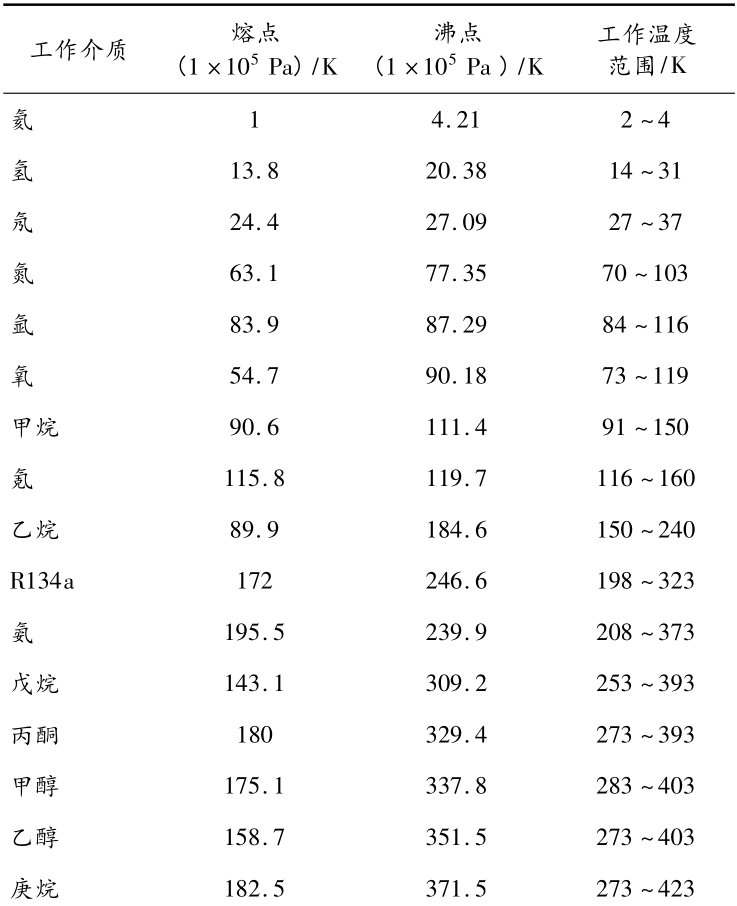
Capillary pressure, evaporative heat transfer performance, permeability and flow resistance should be taken into consideration. The common suction core includes sintered suction core, groove suction core and composite core.
The structure of groove suction core is shown in Figure 2(a). The grooves have high permeability and relatively low capillary pressure. The sintered suction core has high capillary pressure and good evaporative heat transfer performance, but low permeability and high flow resistance.
The successful development of composite core, including sintered powder mesh, groove mesh and sintered powder groove composite core, has solved the problems of capillary pressure and permeability.
Common suction cores of sintered soaking sheets include powder sintering, copper foam and wire mesh (as shown in Figure 2(b) ~ (d)).
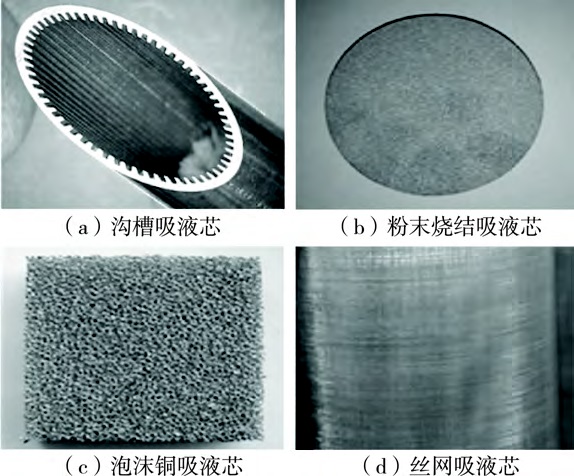
Liquid core structure
1. Research on thermal management of electronic equipment based on thermal soaking plate
At present, the thermal management of electronic equipment based on thermal soaking plate mainly includes the thermal performance experiment, numerical simulation and theoretical research of thermal soaking plate applied to computer and micro-electronic equipment.
1.1 Research on computer thermal management based on soaking plate
In recent years, there has been a growing number of feasibility studies on the use of vapor chamber for computer thermal management, with Mochizuki et al providing insights into various thermal management solutions using heat pipes and vapor chamber as heat transfer devices. The use of gas-liquid phase transformation for heat dissipation is a key factor to extend the air cooling limits of high performance computers. In addition to the thermal management of computers, the use of heat pipes is considered in order to prevent global warming and a global crisis of environmental impacts by reducing greenhouse gas emissions.
Wuttijumnong et al. outlined various cooling schemes for high power laptops using heat pipes and vapor chamber.
Wu et al. applied thermal vapor chamber to the thermal management of high-density blade server (HDS). Compared with the performance of conventional heat sink, some suggestions are put forward for other high-end applications.
Phan et al. improve the heat diffusion resistance between the supercomputer's high-performance processor and integrated heat sink (HIS) by using a two-phase microchannel thermal vapor chamber. The structure of the microchannel VC is designed to take advantage of a combination of high thermal conductivity over short distances and high speed steam diffusion over longer distances.
Ma et al. integrated the multi-fan system of the piezoelectric brake (MFPA) with the vapor chamber. The integrated system is embedded in a microcomputer for thermal management. The experimental results show that the thermal resistance of all models decreases with the increase of thermal input power.
The heat dissipation ability and the influence of heat source on the heat performance of the heat vapor chamber with different working medium were studied by experimental method.
Hachiya et al. studied the enhanced thermal vapor chamber that uses organic refrigerant instead of water as working medium and is used for graphics processor (GPU) heat dissipation. It has also been confirmed that the evaporative heat transfer coefficient of the vapor chamber under the heat flux of GPU can be improved by using the refrigerant.
Naphon and others use R-141b refrigerant as the working medium to cool hard drives. It is found that the cooling technology of VC has significant influence on the cooling of hard disk drive. The results of this study have important technical implications for the effective design of cooling systems for personal computers or electronic devices to enhance cooling performance. Naphon et al., implement cooling experiments that are beneficial to PC cooling for computer processing units. Figure 3 describes free-to-play cooling systems used in PC cooling. Under the actual operating conditions of PC, the test was carried out by using deionized water as the working medium. It is found that the cooling technology of vapor chamber has significant influence on the cooling of CPU.
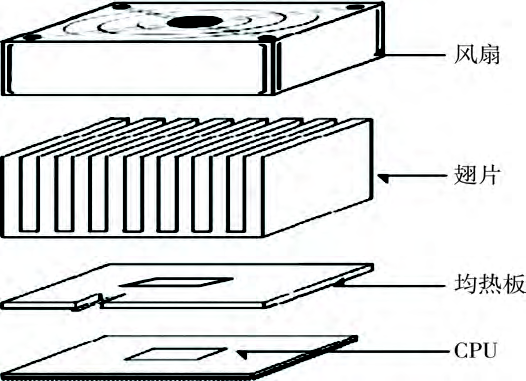
用于冷却计算机的均热板系统
Liu et al. invented an anti-gravity flat heat pipe for laptop computer heat dissipation. The influence of heat source location on temperature uniformity of anti-gravity flat heat pipe was investigated experimentally. The temperature uniformity of anti-gravity flat heat pipe was analyzed under the conditions of different heat source locations (six locations), different heat input power and different liquid filling rate. The results show that the antigravity soaking plate can meet the heat dissipation requirements of notebook computer.
The numerical simulation of two phase flow is used to study the heat dissipation capacity of vapor chamber in computer thermal management. Parhizi et al. studied the thermal vapor chamber for thermal management of multi-chip microserver modules. A numerical simulation model for the two-phase flow in a trapping vapor chamber was established to analyze the effects of various parameters on the performance of the VC. The research results are very important for the design of two-phase cooling of microserver chips.
1.2 Research on thermal management of micro-electronic equipment based on thermal vapor chamber
The thermal management of micro-electronic equipment based on thermal vapor chamber includes the experimental test, theoretical research and numerical simulation of thermal performance of thermal vapor chamber in the thermal management of micro-electronic equipment. In the experiment test, the heat dissipation capacity of the heat vapor chamber is compared with that of copper plate and aluminum plate. Nikmehr et al. manufactured two vapor chamber to cool high-power printed circuit boards.
Hu et al. developed a small vapor chamber to solve hot issues in high power electronic packaging. The VC used for heat dissipation in high power electronic packaging is shown in Figure 4. The experimental results show that the uniform plate has low thermal resistance and good temperature uniformity.
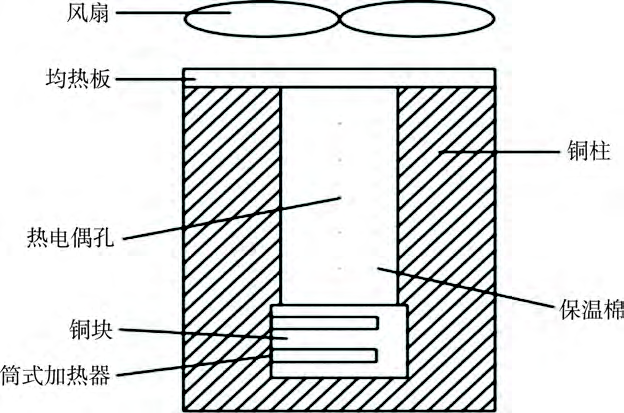
Heat VC for high power electronic package heat dissipation
Obata et al. analyzed the thermal vapor chamber embedded at the bottom of the radiator for thermal management of microelectronics. The results show that the vapor chamber can work stably and keep a low working temperature.
Wang et al. investigated the thermal performance of ball gate array packages of high-performance plate-level flip chips for circuit boards equipped with solid copper or thermal plate (VC) as heat sink and aluminum filler or In solder as thermal interface material (TIM). The results show that the thermal properties can be significantly improved by switching TIM from aluminum filler to In solder. When VC is used instead of a solid Cu heat sink, an improvement in thermal performance is observed.
Bose et al. experimentally and theoretically studied the heat transfer performance of vapor chamber and its effectiveness in cooling power transistors on circuit boards. The experimental results are compared with the ANSYS numerical simulation results.
Yu et al. carried out experimental measurement and thermal modeling on the insulated gate bipolar transistor (IGBT) module based on the VC and two IGBT modules based on copper plate. The IGBT thermal vapor chamber used for IGBT heat dissipation is shown in Figure 5. Experimental data show that the thermal resistance of IGBT module based on VC decreases greatly with the increase of IGBT thermal load. In thermal modeling, VC's two-phase flow heat model is simplified to single-phase heat model. In addition, a thermal resistance model is constructed for IGBT module based on VC, and the results of thermal modeling and simulation are in good agreement with the experimental results.
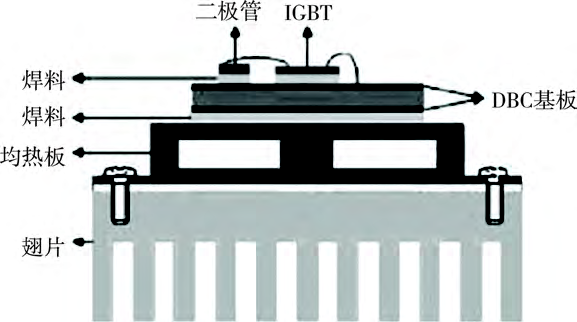
Heat vapor chamber for IGBT heat dissipation
2. Research on thermal management of electronic components based on thermal vapor chamber
The research on thermal management of electronic components based on thermal vapor chamber is basically aimed at the thermal management of light-emitting diode (LED), which mainly includes two parts: experiment and simulation.
In the LED thermal management of the spillboard, the thermal performance of the VC is mainly analyzed experimentally. Kim et al. conducted the experimental analysis of the gap type vapor chamber heat pipe (CVCHP). The overall results show that the heat dissipation effect is better when cooling high-power LED packaging.
Huang et al. experimentally studied the thermal performance of the thermal vapor chamber module applied to high-power LED under natural convection conditions. This provides a good solution for solving the heat dissipation problem of high power LED.
Ju et al. developed a heat vapor chamber that combines the CTE customized outer shell and mixed liquid suction core, which can be used in the thermal management of laser diode arrays.
Ong et al. use thermoelectric (TE) as heat pump to transfer heat from the cold end to the hot end. The combined performance of VC and TE for LED thermal management was evaluated.
Wang et al. found that the thermal performance of LED vapor chamber substrate was many times that of LED copper and aluminum substrate. Moreover, the hot spot problem of 50 W high power LED was successfully solved based on LED heat VC. Led-based heat vapor chamber have the best thermal performance above 5W.
Huang et al. introduced a novel vapor chamber technology to solve the problems of uneven junction temperature of modules across LED arrays, uneven operating temperature of LED arrays and heat storage leading to rising operating temperature.
In the experimental tests, more focus was placed on the manufacturing of new heat absorbing core and working medium for LED vapor chamber. Chen et al. studied the VC with radial multi-artery reentry micro-channel applied to LED VC. The vapor chamber applied to LED VC is shown in Figure 6.
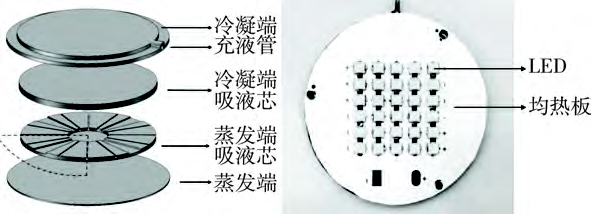
VC for LED heat dissipation
Jian et al. studied the thermal performance and cycling characteristics of the working medium of the T-shaped heat soaking plate specially designed for motorcycle LED lights. The results show that both the thermal load and the cooling condition have great influence on the thermal performance of the vapor chamber.
Lu et al. proposed a 3D vapor chamber (3D VC) to solve the heat dissipation problem of automobile headlights. The experimental results show that 3D VC has good temperature uniformity, and the minimum thermal resistance of 3D VC is 0.125 K/W under 50 W thermal load.
Luo et al. designs and manufactures Micro-Mapor Chamber (MVC) for light-emitting diodes (leds) to improve heat dissipation efficiency and reliability. The experimental results show that the structure of the suction core has an important effect on the heat transfer ability of MVC.
Tang et al. developed an integrated heat sink (IHSVC) with an vapor chamber for thermal management of high-power light-emitting diodes (leds). The suction cores are parallel and orthogonal micro-grooves that are made using a micro-milling method. The experimental results show that the performance of high-power LED is good with IHSVC unit.
Wang et al. experimentally studied the thermal management of high power light-emitting diode (LED) using a homogenized vapor chamber filled with Al2O3 nanofluid. The experimental results show that the total thermal resistance of the vapor chamber is lower.
Very few scholars use numerical simulation method to study the heat dissipation capacity of vapor chamber. You et al. designed and analyzed a new high-power LED cooling device, which is composed of a VC, a heat pipe array and a heat sink. The professional thermal analysis software Flotherm was used for simulation to calculate the transmission process, and the simulation results show that the design has better heat dissipation capacity.
3. Research on thermal management of electric vehicles based on soaking plate
In the thermal management of electric vehicle based on vapor chamber, the heat dissipation capacity of thermal VC in battery thermal management of electric vehicle is mainly studied by experimental method. Gou et al. explored the feasibility of the new 3D vapor chamber (3D VC) to meet the energy utilization requirements of electric vehicle (EV) battery Thermal management system (BTMS). In contrast to the flat shape of a conventional vapor chamber (VC), the prepared 3D VC consists of three interconnected but non-coplanar chambers. The vapor chamber applied to an EV battery thermal management system is shown in Figure 7. Experimental results show that 3D VC with higher liquid filling rate (120%) performs better, especially at high heating power.
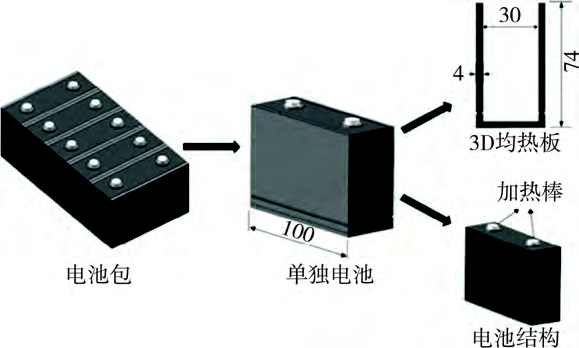
Vapor chamber for electric vehicle battery thermal management system
Liu et al. developed a thermal management system for cylindrical lithium-ion battery packs based on vapor chamber combined with fin structure. The temperature control performance of the system under ambient temperature of 25 ℃ and different discharge rates (2C, 3C, 5C) was tested. Subsequently, the effects of cooling area, flow rate and condensation method (forced cooling and water cooling) on the cooling performance of the system were studied and analyzed. The results show that the combination of vapor chamber and fin structure is a feasible solution to solve the heat dissipation of lithium-ion battery pack.
Dan Dan et al. used the VC as the heat transfer component of battery thermal management, and studied the heat transfer performance and temperature uniformity of the vapor chamber under different heat generation power conditions. At the same time, the diffusion thermal resistance and thermal conductivity of the vapor chamber were calculated theoretically.
A few studies have focused on the numerical simulation of electric vehicle thermal management. Dan et al. designed a thermal management system for lithium-ion battery packs equipped with a miniature heat pipe array (MHPA). The accuracy of the proposed model is verified by comparing the simulation results with the experimental data under the steady-state, dynamic and operating conditions. Simulation results show that MHPA-based thermal management of lithium-ion batteries can provide a fast response to ensure temperature stability under rapidly changing operating conditions.
4. Research on thermal management of other applications based on VC
In the other applications of the vapor chamber, involved in energy, industrial production, electrical and military applications and other fields.
Shittu et al. proposed numerical studies of photovoltaic/thermoelectric hybrid systems with and without flat heat pipes. Photovoltaic, photovoltaic thermoelectric and photovoltaic thermoelectric heat pipe systems are shown in FIG. 8, and their electrical properties are compared and analyzed in detail. The effects of solar concentration ratio, ambient temperature, wind speed and cold side temperature of thermoelectric generator on the efficiency and power output of photovoltaic and photovoltaic/thermoelectric hybrid systems were analyzed using COMSOL5.4 Multiphysics software.

Pv thermoelectric and wide volt heat pipe system diagram
Lertsatitthanakorn et al. studied the potential application of soaking plate in improving the cooling performance of thermoelectric (TE) air cooling systems. The experimental data are compared with the corresponding data of the conventional plate-fin radiator. It is proved that the coefficient of performance (COP) can be greatly improved by using vapor chamber.
In order to take advantage of the thermal cycle of biochemical fluid samples, Go et al. designed and manufactured an isothermal temperature source with a large surface area, and evaluated its thermal characteristics through experiments. The large surface area isothermal temperature source is realized by using the soaking plate. It is concluded that the provided isothermal temperature source is unable to produce a temperature gradient within the biological sample fluid.
Hasnan et al. compared the vapor chamber and BeCu plug-ins to improve cooling rates and provide uniform temperature distribution in the production of plastic products. The experiment was carried out under the condition of heat input, cooling temperature and cooling rate change. The vapor chamber provides an effective way to speed up the heat transfer process in injection molding of plastic products, with heat transfer up to 67% compared to traditional cooling methods using the BeCu plug-in.
Limkaisang et al. have designed and manufactured traditional rice cookers (CRC) and vapor chamber rice cookers (VRC) of equal size. The temperature distribution characteristics and thermal efficiency of CRC and VRC were compared. The results show that the temperature distribution of water in the rice cooker shows different characteristics. The thermal efficiency of VRC is about 5.57% higher than that of CRC.
Li Tao et al. applied aluminum vapor chamber to heat dissipation of radar, and the heat source is the real heat source distribution of radar. The experimental results show that soaking plate provides a new solution direction for heat dissipation of high-power electronic equipment.
5. Thermal performance test of aluminum vapor chamber
5.1 Experimental system
The test system is composed of data acquisition system, experiment system and heating system. The schematic diagram of the test system is shown in Figure 9. The size of the aluminum vapor chamber is 120 mm × 100 mm × 2 mm, and the liquid filling rate is 10%. The absorbing core is sintered by aluminum powder and the working medium is acetone. The heat source area is 50 mm × 60 mm × 2 mm and is located in the center.

1- computer; 2- Data acquisition instrument; 3-infrared thermal imager; 4: Fan; 5- VC and fin; 6-copper base block; 7- Heating block; 8-mica sheet; 9- display; 10- Voltage regulator
Test system schematic
5.2 Data Processing
The formula for calculating the thermal resistance of the vapor chamber is as follows:

In Formula (1), R is the thermal resistance of the vapor chamber; Q is heating power, Q =UI; Te is the average temperature at the evaporation end, which can be calculated by equation (2). Tc is the average temperature of the condensing end measured by the infrared thermal imager.

5.3 Uncertainty analysis
The uncertainty analysis of the test system is obtained by the error transfer principle. Suppose that function Z is composed of independent parameters X1, X2 and X3, and the uncertainty of each independent parameter is ΔX1, ΔX2 and ΔX3, then the uncertainty of Z is:

The uncertainty of thermal resistance is:

Table 3 shows the uncertainty of main parameters in the test system
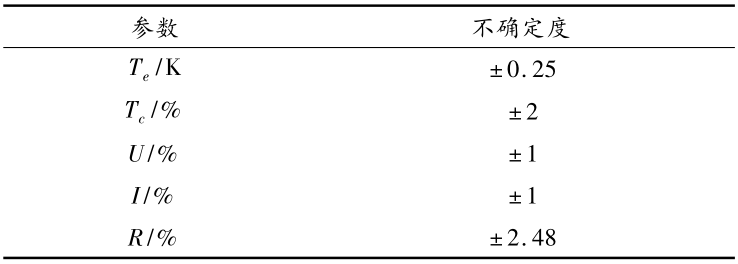
Table 3 Uncertainty of main parameters in the test system
5.4 Results and discussion
In the test system, the vapor chamber is used as the cooling system of the electronic components, and the maximum temperature of the electronic components is 80 ℃. Therefore, when the average temperature at the evaporation end reaches 80 ~ 90 ℃, the test is over. At the same time, the steady-state and transient operating characteristics of the vapor chamber are studied. When the steady-state characteristics of the vapor chamber are measured, the heating power is increased by 10W each time. When measuring the transient characteristics of the vapor chamber, the heating power is the maximum power under steady state.
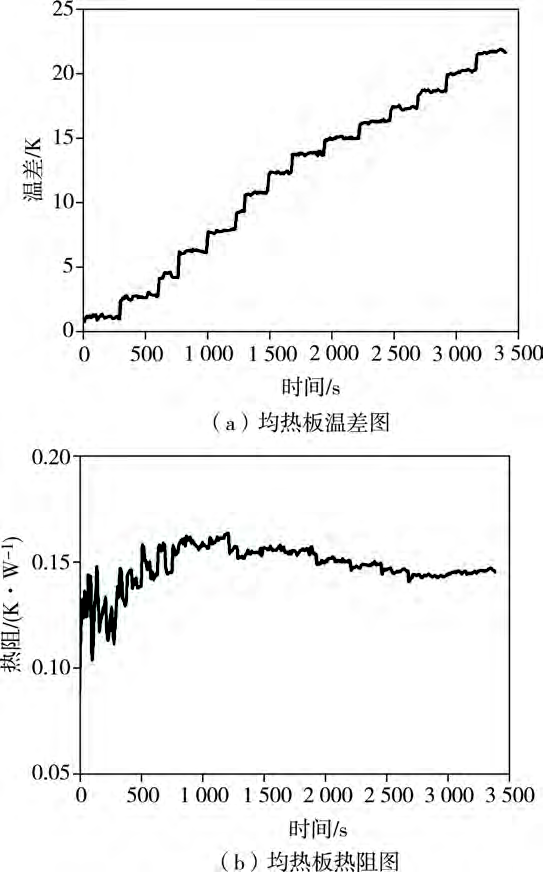
FIG. 10 Steady-state operating characteristics of the vapor chamber
The steady-state operating characteristics of the vapor chamber are shown in Figure 10. When the heating power reaches a certain value, the thermal resistance of the vapor chamber basically stabilizes at a fixed value, and the average thermal resistance of the vapor chamber is 0.15K /W. The transient operating characteristics of the vapor chamber are shown in Figure 11. The start-up time is 50s. After the soaking plate works normally, the average thermal resistance of the vapor chamber is 0.14K/W.
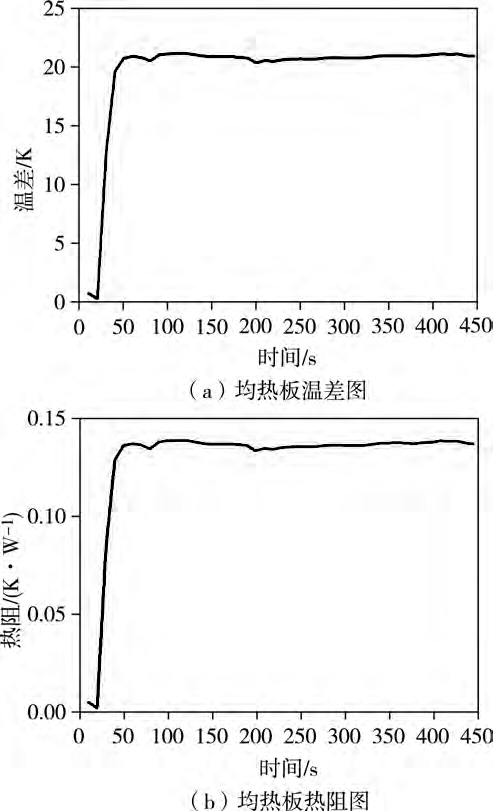
Transient operating characteristics of VC
6. Conclusion
This paper firstly summarizes the shell material, suction core type and working medium of the vapor chamber, and summarizes the application research of vapor chamber in different fields, including electronic equipment, electronic components, automotive applications, energy, industrial production, electrical appliances and military fields. The conclusions are as follows:
1) The wettability, thermal conductivity and compatibility with the working medium of the shell material of the vapor chamber should be considered when selecting the shell material; The selection factors of the working medium inside the vapor chamber include compatibility with the tube and shell material and the working temperature range of the working medium; The suction core structure should have the characteristics of large capillary pressure, excellent evaporative heat transfer performance, large permeability and small flow resistance.
2) Using experimental, theoretical and numerical simulation methods to study the application of vapor chamber in various fields, including electronic equipment, electronic components and electric vehicle thermal management, but also involved in energy, industrial production, electrical and military applications.
3) The steady-state and transient thermal properties of aluminum vapor chamber were tested respectively. The average steady-state thermal resistance of aluminum vapor chamber was 0.15K /W, and the average transient thermal resistance was 0.14K /W.

















